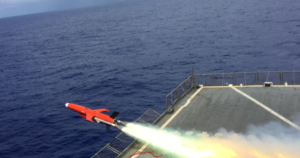
The Navy recently conducted test flights of the BQM-177A subsonic aerial target off the coast of Japan ahead of Full Operational Capability (FOC) slated for this year, the service said Monday. The Kratos [KTOS]-made target is the Navy’s newest recoverable target. It aims to act as a high performance unmanned aircraft to replicate cruise missile threats launched from the air, land, surface and subsurface. The Navy uses the targets to test the effectiveness of air defense systems and training. The…

 By
By 











